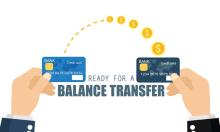How to Choose or Change Your Credit Card Payment Due Date

Paying your credit card bill on time is a big part of keeping your finances healthy. It helps you avoid late fees, keeps your credit score strong, and lowers stress. But what if your current due date just doesn’t work for you? Maybe it falls before payday or overlaps with other bills. The good news is — most credit card companies let you choose or change your payment due date. This small change can give you more control over your money.
Let’s explore why you might want to change your due date, how to do it, and what benefits it can bring.
Why Change Your Payment Due Date?
There are many personal and financial reasons to change your payment due date. Everyone has a different income schedule. Some people get paid once a month, others every two weeks, and some weekly. If your credit card bill is due a few days before your paycheck comes in, it can create a tight situation. You might struggle to pay the full amount or even miss the payment completely.
Some people also have many bills due around the same time. For example, your rent, phone bill, utility bill, and credit card bill could all be due in the first week of the month. This can feel overwhelming. By changing your credit card due date, you can spread your bills out more evenly throughout the month, making it easier to manage them one by one.
Another reason is organization. Maybe you’re just trying to simplify your finances. Changing the date to the same day as other bills — or the opposite, to a totally separate day — can help you stay on track.
Benefits of Changing Your Payment Due Date
Changing your credit card due date may seem like a small step, but it can have a big impact. Here are some of the main benefits:
- Better cash flow management: By aligning your due date with your payday, you can make sure you always have enough money to cover your credit card bill. This helps prevent borrowing or dipping into savings just to make a payment.
- Reduced risk of late payments: When the due date fits into your monthly routine, you’re more likely to remember it and pay on time. Late payments often come with fees and can hurt your credit score, so avoiding them is key.
- Lower stress levels: Not having to worry about juggling multiple bills at once can take a huge load off your mind. Having bills spaced out means less pressure on any one day of the month.
- More predictable budgeting: If your bills are scheduled around your income, it’s easier to plan how you’ll use your money. You know when to save, when to spend, and how much you need at different times of the month.
- Positive credit impact: Making on-time payments regularly helps build and maintain a good credit score. Adjusting your due date can make it easier to stay consistent, which helps your credit in the long run.
Can You Choose Any Date?
Most credit card companies allow you to choose a due date between the 1st and the 28th of the month. They usually don’t allow the 29th, 30th, or 31st as a due date, mainly because not every month has those days. February, for example, only has 28 days most years.
Some banks may limit how often you can change your due date — usually once every few months. Also, if you have more than one credit card with the same bank, you may or may not be able to have the same due date for each one. It depends on the company’s policies.
Before making a change, it’s a good idea to look at your past bills. Check your billing cycle, your current due date, and how it lines up with your income and other expenses.
How to Change Your Due Date
It’s usually simple and fast to change your credit card payment due date. Here are the usual ways to do it:
- Online account: Log in to your credit card account on the issuer’s website. Go to the “Payments” or “Billing” section. If it's possible, a link to update your due date will appear. You can usually select a new date from a calendar or list.
- Mobile app: Most credit card apps also allow you to change your due date. Look in the settings or payments area.
- Customer service: If you can’t find the option online or just prefer talking to someone, call the number on the back of your card. A support agent can assist you in picking a new date.
- In person (for some banks): If your card is from a bank with branches, you may be able to visit in person and ask a staff member to help you with the change.
Once you request the change, it might take one billing cycle to go into effect. That means your current due date might stay the same for now, but the new one will start with your next statement.
Things to Keep in Mind
Changing your payment due date doesn’t mean skipping a payment. Make sure you still pay the amount due on your current bill by the original due date, until the new one is active. Missing a payment, even during the switch, can lead to late fees and a drop in your credit score.
Also, your billing cycle may change slightly. This can affect when interest is charged or when purchases show up on your statement. It usually doesn’t cause problems, but it’s something to watch for.
Lastly, remember that not all credit card companies offer this option. Some may require your account to be in good standing or have been open for a certain period of time.
Final Thoughts
Being able to choose or change your credit card payment due date is a simple way to make your financial life easier. It lets you take control of your money, line up bills with your paycheck, and avoid stressful payment crunches. If your current due date doesn’t work well for you, don’t wait — check with your credit card issuer and make the change. It only takes a few minutes, but it can help you stay organized, avoid late payments, and keep your credit strong for the future.




Leave a Reply